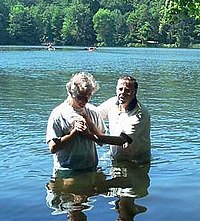Congregationalist polity, or congregational polity, often known as congregationalism, is a system of ecclesiastical polity in which every local church (congregation) is independent, ecclesiastically sovereign, or "autonomous". Its first articulation in writing is the Cambridge Platform of 1648 in New England.

The Christian Church (Disciples of Christ) is a mainline Protestant Christian denomination in the United States and Canada. The denomination started with the Restoration Movement during the Second Great Awakening, first existing during the 19th century as a loose association of churches working towards Christian unity, then slowly forming quasi-denominational structures through missionary societies, regional associations, and an international convention. In 1968, the Disciples of Christ officially adopted a denominational structure at which time a group of churches left to remain nondenominational.

The Restoration Movement is a Christian movement that began on the United States frontier during the Second Great Awakening (1790–1840) of the early 19th century. The pioneers of this movement were seeking to reform the church from within and sought "the unification of all Christians in a single body patterned after the church of the New Testament."
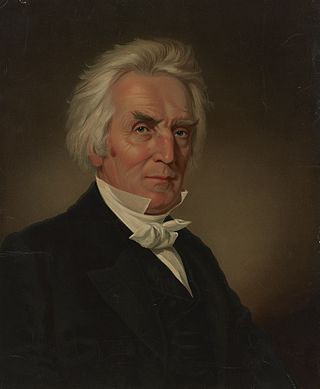
Alexander Campbell was an Ulster-Scots immigrant who became an ordained minister in the United States and joined his father Thomas Campbell as a leader of a reform effort that is historically known as the Restoration Movement, and by some as the "Stone-Campbell Movement." It resulted in the development of non-denominational Christian churches, which stressed reliance on scripture and few essentials.
The Churches of Christ, also commonly known as the Church of Christ, is a loose association of autonomous Christian congregations. The Churches of Christ are represented across the world. Typically, their distinguishing beliefs are that of the necessity of baptism for salvation and the prohibition of musical instruments in worship. Many Churches identify themselves as being nondenominational. The Churches of Christ arose in the United States from the Restoration Movement of 19th-century Christians who declared independence from denominations and traditional creeds. They sought "the unification of all Christians in a single body patterned after the original church of the New Testament."
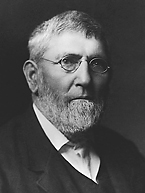
David Lipscomb was a minister, editor, and educator in the American Restoration Movement and one of the leaders of that movement, which, by 1906, had formalized a division into the Church of Christ and the Christian Church. James A. Harding and David Lipscomb founded the Nashville Bible School, now known as Lipscomb University in honor of the latter.
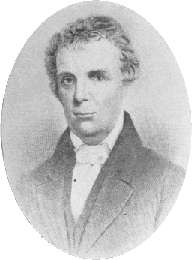
Barton Warren Stone was an American evangelist during the early 19th-century Second Great Awakening in the United States. First ordained a Presbyterian minister, he and four other ministers of the Washington Presbytery resigned after arguments about doctrine and enforcement of policy by the Kentucky Synod. This was in 1803, after Stone had helped lead the mammoth Cane Ridge Revival, a several-day communion season attended by nearly 20,000 persons.
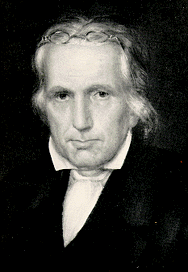
Thomas Campbell was a Presbyterian minister who became prominent during the Second Great Awakening of the United States. Born in County Down, he began a religious reform movement on the American frontier. He was joined in the work by his son, Alexander. Their movement, known as the "Disciples of Christ", merged in 1832 with the similar movement led by Barton W. Stone to form what is now described as the American Restoration Movement.

The Gospel Advocate is a religious magazine published monthly in Nashville, Tennessee for members of the Churches of Christ. The Advocate enjoyed uninterrupted publication since 1866 until the COVID-19 pandemic.
The Christian Association of Washington was an organization established by Thomas Campbell in 1809 to promote Christian unity. It was a study group that Campbell formed with like minded friends and acquaintances in the local neighborhood of Washington, Pennsylvania. The group sought to foster unity by focusing on a common form of Christianity that they could all agree upon. This charter that Campbell wrote for this group, the Declaration and Address of the Christian Association of Washington, became one of the most important early texts of the Restoration Movement.
The Christians (Stone Movement) were a group arising during the Second Great Awakening of the early 19th century. The most prominent leader was Barton W. Stone. The group was committed to restoring primitive Christianity. It merged with the Disciples of Christ (Campbell Movement) in 1832 to form what is now described as the American Restoration Movement (also known as the Stone-Campbell Restoration Movement.)
The Millennial Harbinger was a religious magazine established by the early Restoration Movement leader Alexander Campbell in 1830. Campbell viewed the magazine as an important vehicle for promoting the religious reforms that he believed would help usher in the millennium.
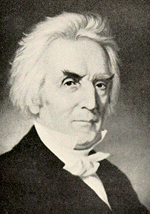
The Christian Baptist, established in 1823 by Alexander Campbell, was the first magazine associated with the early Restoration Movement. The prospectus for the Christian Baptist described its purpose as "[to] espouse the cause of no religious sect, excepting that ancient sect called 'Christians first at Antioch.' Its sole object shall be the eviction of truth, and the exposure of error in doctrine and practice." The style has been described as "lively" and "sarcastic". Campbell discontinued the Christian Baptist in 1830 and began publishing a new journal named the Millennial Harbinger which had a "milder tone".
The Redstone Baptist Association was an association of Baptist churches in Western Pennsylvania. The early Restoration Movement leader Alexander Campbell and the congregation he led, the Brush Run Church, were members of the Association for several years during the early 19th century.
The Living Oracles is a translation of the New Testament compiled and edited by the early Restoration Movement leader Alexander Campbell. Published in 1826, it was based on an 1818 combined edition of translations by George Campbell, James MacKnight and Philip Doddridge, and included edits and extensive notes by Campbell.
The Christian Messenger was a religious magazine established by the early Restoration Movement leader Barton W. Stone in 1826. The paper was a key means of communication for the "Christians" led by Stone and a primary source of unity in the movement, but consistently struggled for survival. It also played a key role in promoting the merger of the "Christians" with the "Disciples" led by Thomas and Alexander Campbell.
The American Christian Missionary Society (ACMS) was the first missionary organization associated with the Restoration Movement.
The Mahoning Baptist Association was an association of Baptist churches that was established in 1820 in Ohio's Mahoning Valley. Two prominent early Restoration Movement leaders, Alexander Campbell and Walter Scott, were closely affiliated with the Mahoning Association. The Association was dissolved in 1830.
The Christian Woman's Board of Missions (CWBM) was a missionary organization associated with the Restoration Movement. Established in 1874, it was the first such group managed entirely by women. It hired both men and women, and supported both domestic and foreign missions.
The Churches of Christ in Europe are Christian groups of autonomous congregations using the name "church of Christ" which may or may not have a historical association with the Restoration Movement. These groups are characterized by an emphasis on basing doctrine and practice on the Bible alone in order to restore the New Testament church they believe to have been established by Jesus.
